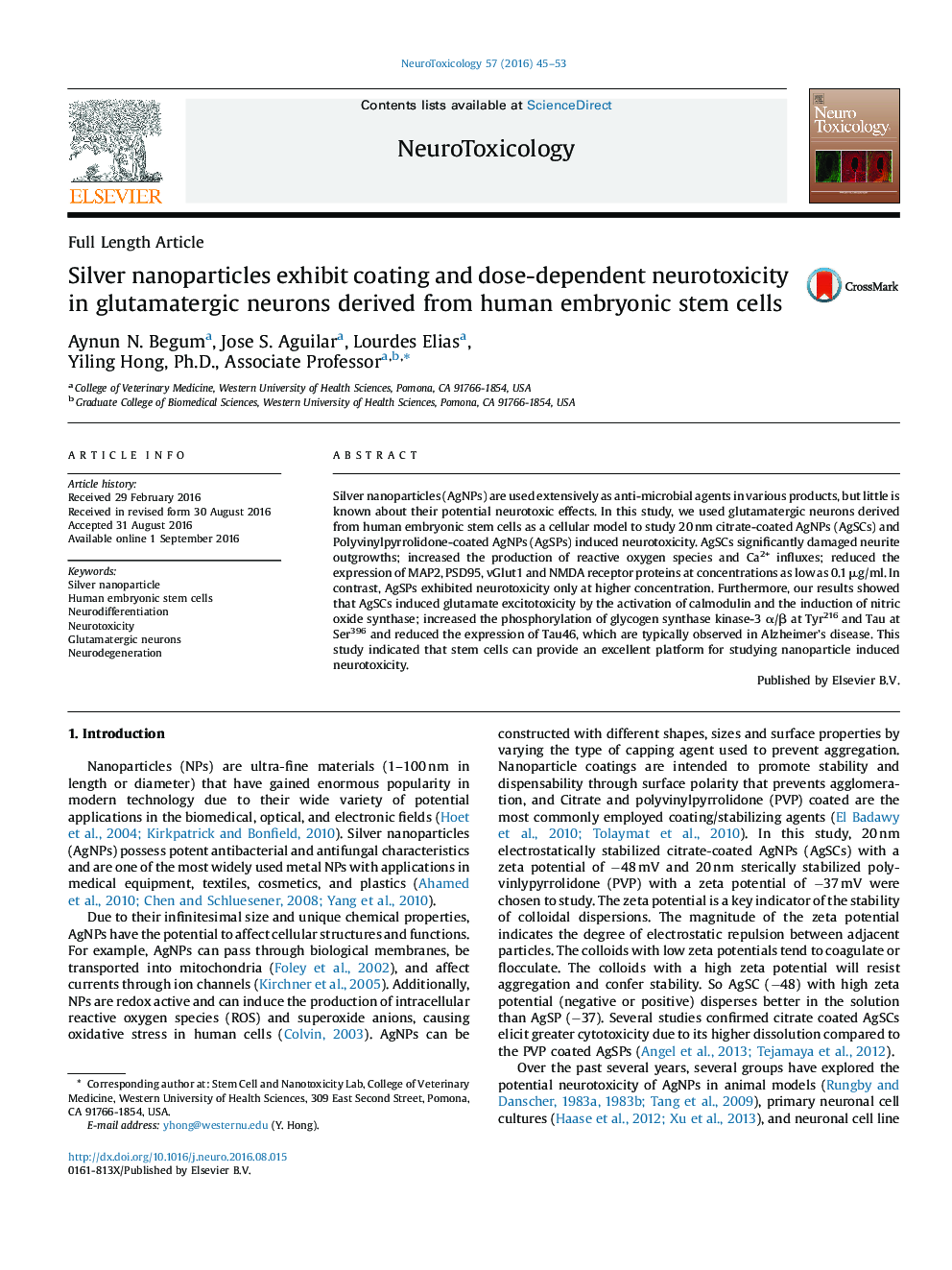| Article ID | Journal | Published Year | Pages | File Type |
|---|---|---|---|---|
| 2589402 | NeuroToxicology | 2016 | 9 Pages |
•Glutamatergic neurons derived from human embryonic stem cells were used for testing silver nanoparticles (AgNPs) toxicity.•AgNPs exhibited coating and dose-dependent neurotoxicity.•20 nm citrate-coated AgNPs (AgSCs) induced ROS/RNS production; increased Ca2+ influxes; and activation of calmodulin and glycogen synthase kinase-3/β at the lower level concentration exposure compared to polyvinlypyrrolidone-coated AgNPs (AgSPs).
Silver nanoparticles (AgNPs) are used extensively as anti-microbial agents in various products, but little is known about their potential neurotoxic effects. In this study, we used glutamatergic neurons derived from human embryonic stem cells as a cellular model to study 20 nm citrate-coated AgNPs (AgSCs) and Polyvinylpyrrolidone-coated AgNPs (AgSPs) induced neurotoxicity. AgSCs significantly damaged neurite outgrowths; increased the production of reactive oxygen species and Ca2+ influxes; reduced the expression of MAP2, PSD95, vGlut1 and NMDA receptor proteins at concentrations as low as 0.1 μg/ml. In contrast, AgSPs exhibited neurotoxicity only at higher concentration. Furthermore, our results showed that AgSCs induced glutamate excitotoxicity by the activation of calmodulin and the induction of nitric oxide synthase; increased the phosphorylation of glycogen synthase kinase-3 α/β at Tyr216 and Tau at Ser396 and reduced the expression of Tau46, which are typically observed in Alzheimer’s disease. This study indicated that stem cells can provide an excellent platform for studying nanoparticle induced neurotoxicity.
Graphical abstractFigure optionsDownload full-size imageDownload high-quality image (89 K)Download as PowerPoint slide
